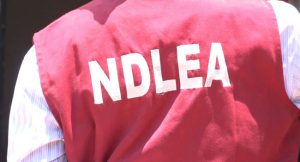Diving into the past: The Black divers searching for slave shipwrecks
Editor’s Note — (CNN) — As he slipped through the kelp forest to the bottom of the Atlantic Ocean, Kamau Sadiki’s eyes hooked onto something resembling the item he and fellow divers had been searching for.However, the water temperature was low at the site just off the coast of Cape Town, and visibility was poor. Veteran diver Sadiki recalls the surge pulling him back and forth as he attempted to get closer to his “first visual of some tangible artifact” of the ship he’d heard so much about.”It was a piece of wood material that was lodged into the rocks,” he tells CNN Travel. “I hesitated before approaching it, and then the surge just carried me straight into it.”Sadiki became overcome with emotion when he grabbed hold of part of the wreckage of the Sao Jose-Paquete de Africa wreck, which sank off Cape Town while transporting over 500 enslaved Africans from Mozambique to Brazil in 1794.It’s thought that 212 of the captives, along with the crew, drowned in the incident.”It was like I could hear the voices,” says Sadiki, who was part of the dive team who located the wreck in 2015. “The screaming, the suffering, the terror, the pain and agony of all those individuals being shackled arm and leg, and then perishing in a wrecking event.”I knew then that I wanted to help tell their story and get those silent voices into the history books.”Buried historyDivers scatter sand from Mozambique near the site where the wreckage of the Sao Jose-Paquete de Africa was found.Rodger Bosch/AFP/Getty ImagesAccording to the Trans-Atlantic Slave Trade Database, around 35,000 ships were used to bring over 12 million enslaved Africans across the Atlantic between the 15th and 19th centuries.Some wouldn’t survive the journey, and an estimated 500 to 1,000 of the ships, including the Sao Jos-Paquete de Africa, wrecked before reaching their destination.However, only five have been found in the many years since then, and just two have been adequately documented.This ultimately means that the remains, along with the stories, of many of the captives who perished lie buried at the bottom of the sea. Sadiki, lead diving instructor for Diving With a Purpose (DWP), a non-profit organization focused on the protection, documentation and interpretation of African slave trade shipwrecks, is among those attempting to bring this painful history to the surface.DWP was founded in 2003 by Ken Stewart, a member of the National Association of Black Scuba Divers (NABS), and Brenda Lanzendorf, a maritime archeologist for Biscayne National Park, after both participated in the 2004 documentary, “The Guerrero Project.”The film told the story of the Spanish pirate ship believed to have crashed while carrying 561 kidnapped Africans in the Biscayne National Park off the coast of Florida. After wrapping up the project, Stewart says he contacted all the divers who appeared on screen and said, “Tired of the same old dives, let’s dive with a purpose.”He then teamed up with Lanzendorf, a park archaeologist at Biscayne, where a vast number of slave ships, along with the Guerrero, had wrecked. Stewart pledged to help her locate some of the wrecks along the area and teach other Black divers maritime archaeology techniques, while Lanzendorf promised to provide him with a vital piece of information in return.”She said if we learned properly she’d show us where the Guerrero was,” explains Stewart. Forgotten voicesAn artifact from the Sao Jose-Paquete de Africa on display at the Slave Lodge museum in Cape Town.Rodger Bosch/AFP/Getty ImagesHowever, Lanzendorf died in 2008, five years after DWP was launched, and the team are still in the dark about the exact location of the wreck.”If she knew where (the Guerrero) was, she took it to the grave with her,” he adds. “So we’re still looking. “We’re doing a search this summer and hopefully we can finalize that (location).” Over the years, DWP has taken part in around 18 missions to find submerged artifacts related to Africans in the Americas, partnering with the Slave Wrecks Project (SWP), a collaboration of organizations hosted by the Smithsonian’s National Museum of African American History and Culture.Underwater archaeologist and storyteller Tara Roberts has spent the past two years following DWP, taking on a storyteller role.Like Stewart and Sadiki, she believes that bringing to the forefront the forgotten voices of the enslaved Africans who died en route is critically important. “At least 1.8 million Africans died in the crossing. Who talks about that? Who’s mourning the lives of those people?” says Roberts.”We’ll never know their names, we’ll never know anything about them. They’re lost people, and nobody is grieving them. Nobody is mourning them. They’re just lost. I don’t think that that’s okay.” Roberts first learned of DWP when she saw a picture of a group of some of the organization’s Black female divers on display in 2019 at the National Museum of African American History and Culture and says she was absolutely transfixed.”These divers are turning stereotypes on their heads just in the very nature of being who they are and doing what they’re doing,” she explains.”They are disrupting these ideas of who Black people are and what Black people do. I think it’s so important for people to be able to see them, to see me, to know that this work is possible that we are in this space too.”Roberts is one of 300 or so divers who’ve taken part in the DWP’s maritime archaeology program, which is open to anyone who’s a certified diver with strong underwater abilities.”It requires some diving skills,” stresses Stewart. “You can’t just come. You need some dives (at least 30) under your belt.”Those who sign up must undertake a week-long training session in which they spend at least three days in the water learning how to document shipwrecks and artifacts, as well as learn underwater investigative and research techniques.”You have to have good what we call peak buoyancy, which means you can be very still in the water,” explains Sadiki, who originally met Stewart through NABS.”That’s critically important, as we have to get very close to some of these artifacts to survey them and we don’t want to disturb them.” However, Stewart admits that the process can be quite grueling and isn’t suited to all divers.”Some people do it and think ‘I don’t want to do this anymore, because it’s quite intense,” he says. Success storiesA mural of the Clotilda slave ship, which was successfully located in 2019, on display in Africatown, Alabama.Carmen K. Sisson/Cloudybright/AlamyOne of DWP’s most recent triumphs was helping to locate the Clotilda, the last known US slave ship to bring enslaved Africans to the United States, which was located near Mobile, Alabama, back in 2019. The ship is believed to have arrived sometime between 1859 and 1860, years after the slave trade was abolished in 1808.”The Clotilda went illegally over to West Africa, loaded up with around 110 Africans and brought them back to Alabama,” explains Roberts.While the ship landed safely, the Clotilda was torched after the slaves were unloaded to destroy all evidence of the illegal crossing.Many of the slaves who were brought over on the ship returned to the area when they were emancipated with the hope of returning to West Africa.In 1866, they founded their own town, Africatown, after saving enough money to buy land from their former owners.Some of the graves of those who survived the Clotilda voyage can be found at the Old Plateau Cemetery in Africatown.Emily Kask/The New York Times/ReduxUnlike those on board some of the other slave wrecks, the stories of those on board the Clotilda have been well documented.In fact, a large number of the descendants of those original residents still live in Africatown, one of the first US towns founded and controlled by African Americans, and tests are being conducted to see if any of those people match with the DNA found in the wreckage.”What’s so incredible about that story is that not only was it illegal and a gross miscarriage of any sense of justice, but there’s still a very strong community associated with that vessel right now,” says Sadiki, who was among the divers who helped to positively locate the ship in 2019.”So we’re working with the community to help tell the story of Clotilda. “Africatown has been plagued by industrial pollution, a declining population and many years of poverty.”Some horrendous things have happened to that community,” adds Sadiki. “But hopefully, with the discovery of the Clotilda, we can begin to bring some prosperity, peace, calm, and most importantly, justice to Africatown.”Diving a little deeperDiving With A Purpose lead instructor Kamau Sadiki creates an in-situ drawing of a shipwreck artifact.Matt Lawrence/NOAAAlthough Sao Jose and the Clotilda are among a small number of success stories, the process of finding slave wrecks is far from simple. In fact, it’s a long and arduous process that can take many, many years with little guarantee of a positive outcome.”Most wrecks start in the archives,” explains Roberts. “With researchers or historians going through the records and finding out where a wreck might have happened. “Then archaeologists become involved, helping to pinpoint where that location could be based on the records.”Once the location has been identified, trained divers are brought in to search the area for artifacts, shackles, or anything that could link it to a particular ship.”If we find some evidence, or artifacts that are of interest, we dive a little deeper,” adds Sadiki. “We go to that particular site to collect more evidence and data and information, and if it looks like a powerful shipwreck site, we do a detailed documentation of that site.”In essence, we’re trying to tell the story of these vessels by literally lifting them from the sea floor.”Roberts is recording a podcast recounting her experiences with DWP, connecting the wrecks to her own identity as an African American.”One of the amazing things I think about this body of water is that it is the thing that connects us,” she says. “It connects the African diaspora, which has been spread all over the place. “I think a lot of African Americans have a real connection to the continent that is beyond the way that the media portrays Africa.”It feels like these ships provide a bridge for us to cross to really begin to learn about what came before.” Reclaiming the pastDWP founder Ken Stewart launched the Youth Diving With a Purpose program, pictured in 2013, in order to get young people involved in the project.DWPRoberts believes that by digging into the pasts of those who perished on the boat and reclaiming those stories, healing can begin. “I think that much of the way that we (African Americans) see ourselves is through a lens of trauma, pain and sadness,” she says. “Those kinds of ideas and feelings and experiences are often the way that black folks’ stories are told.”I don’t think that that’s the full of us. And I’m much more interested in the complexity of our story. Our story doesn’t start in slavery.”This sentiment is shared by Stewart, also a co-founder of the Tennessee Aquatic Project and Development Group, who has focused a lot of time on getting young people involved in the organization, as well as diving in general, noting that it’s simply unaffordable for some. He began developing Youth Diving With a Purpose (YDWP,) aimed at those between 15 and 23, back in 2011.For Stewart, having the younger generation on board is vitally important, as he feels that many simply aren’t aware of the full extent of slavery.”Here in the US, our (African American) history has been ignored,” he adds. “They don’t really teach anything about slavery in schools.”And I think if you don’t teach your history, you’re bound to repeat it. That’s been proven over and over again.”It’s important that we teach the next generation. Those are the ones that are going to turn this thing around.”Now age 76, Stewart remains heavily involved with DWP’s missions, but is acutely aware that he’ll need to start winding things down at some point.However, there’s one very important goal he hopes to achieve before stepping back from the organization.”My tenure with DWP is coming to a close, and I’d sure like to end it by finding the Guerrero,” he admits. “But what I’d really like to do is to educate and bring on some young people so we can keep DWP going. “There are thousands of ships out there that have not been found. We want to be part of that.”






